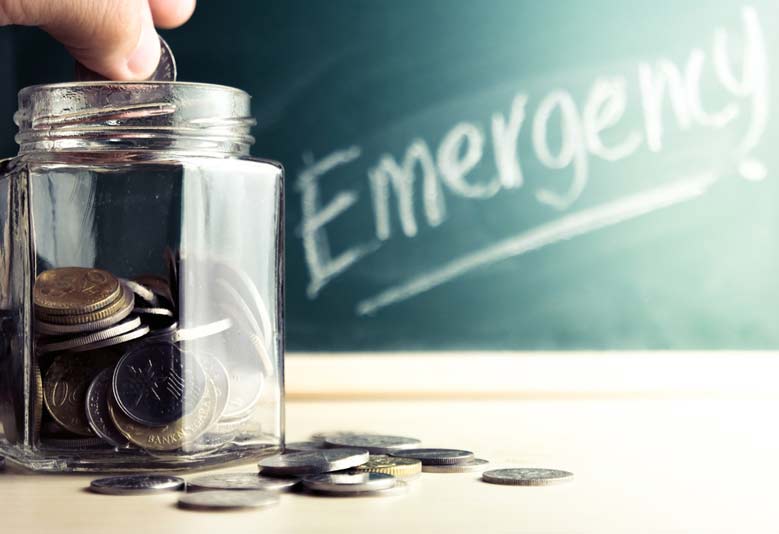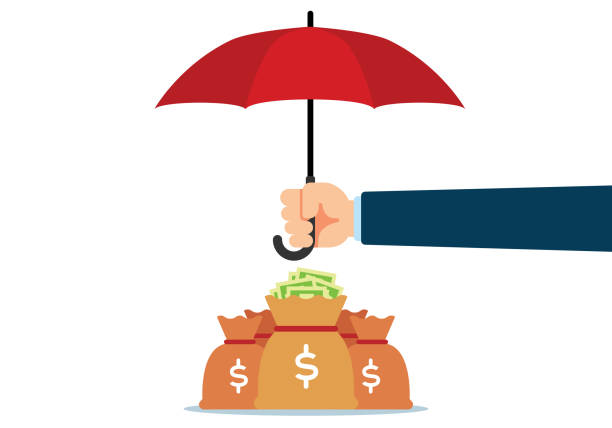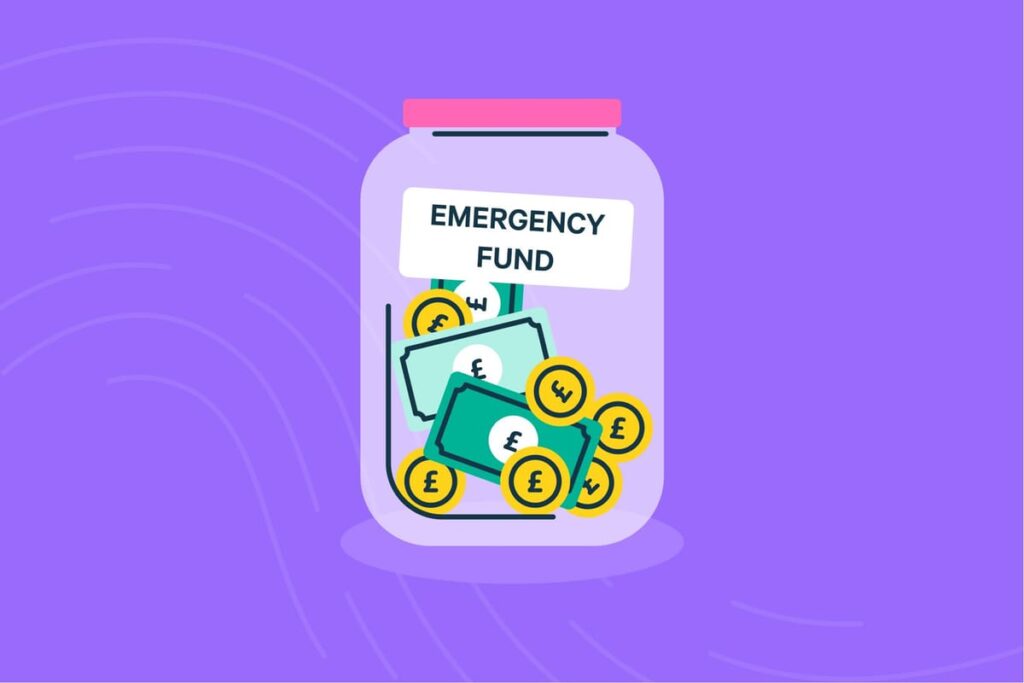In the world of personal finance, few things are as universally recommended, yet as frequently debated, as the emergency fund. It’s the essential financial safety net—a pool of readily accessible cash specifically designated to cover life’s inevitable, unexpected expenses. But a simple recommendation often leads to a more complex question: How much is enough?
The textbook answer is often “three to six months’ worth of living expenses.” While a great starting point, this figure is a generic guideline that doesn’t account for the nuances of your personal situation, career stability, or family size. To truly determine the right size for your emergency fund, you need a more personalized, strategic approach.
Why the Emergency Fund is Non-Negotiable
Before diving into the numbers, it’s critical to understand the purpose of this fund. It’s not a savings account for a down payment, a new car, or a vacation. It is financial fire suppression.
The Peace of Mind Factor
The primary benefit of an emergency fund is the reduction of financial stress. When an unexpected event occurs—a job loss, a major car repair, an unforeseen medical bill, or a home repair—having a cash buffer allows you to focus on resolving the problem, not on how you’re going to pay for it.
Protecting Your Financial Future
The emergency fund is the ultimate shield against high-interest debt. Without one, a financial shock forces you to rely on credit cards, personal loans, or even dipping into retirement accounts (which often incurs penalties and taxes). By having the cash on hand, you protect your long-term wealth goals from being derailed by short-term crises. It keeps you on the path to financial freedom.
Step 1: Calculate Your True Monthly Expenses
You can’t set a savings goal until you know what you’re trying to cover. This is where most people make the first mistake—they use their income instead of their expenses as the baseline.
Essential vs. Non-Essential
Go through your last three months of bank and credit card statements and categorize every expense.
| Category | Description |
| Essential Expenses | Must-haves you can’t easily cut: Rent/Mortgage, minimum loan payments, utilities, groceries, health insurance, transportation (gas/bus fare). |
| Non-Essential Expenses | Nice-to-haves you would cut in a crisis: Dining out, subscriptions (Netflix, gym, etc.), entertainment, vacation savings, luxury purchases. |
Your emergency fund must be based on your Essential Expenses—the absolute minimum you need to survive. Sum up your monthly essential expenses. This total is your Base Survival Number (BSN).
Example: If your total essential expenses (rent, food, insurance, minimum debt payments) equal $3,500, then your BSN is $3,500.
Step 2: Determine Your Minimum Target: The “Three-Month” Rule
The foundational rule suggests saving three months’ worth of your BSN. This is the minimum required target for almost everyone, especially those with stable incomes and a single source of income.
Minimum Target=BSN×3
Why three months? It’s generally considered the time needed to successfully navigate a smaller crisis, such as a major appliance failure or a sudden, unexpected medical bill that your insurance doesn’t fully cover. It buys you time to rearrange your budget without taking on debt.
Step 3: Determine Your Ideal Target: The Risk Assessment
While three months is the floor, most financial experts recommend aiming for six months of essential expenses. Furthermore, specific personal circumstances should push you to aim for nine, or even twelve months. To determine your ideal target, you need to conduct a personal Risk Assessment.
Evaluate the following factors and score yourself honestly.
1. Career and Income Stability (The Unemployment Risk)
- Highly Stable (3-6 Months): You work in an industry with consistent demand (e.g., teaching, healthcare, government), have tenure, or have highly transferrable, specialized skills. If you lost your job, you could likely find a new one quickly.
- Average Stability (6-9 Months): You work in an industry with cyclical risk (e.g., manufacturing, construction, retail) or are in a highly competitive field. Finding a comparable new job might take several months.
- Low Stability (9-12+ Months): You are self-employed, a freelancer, earn significant income via commission, work in a volatile industry (e.g., start-ups), or are the sole earner in a family. Your income is inherently less secure and losing your main client or contract would require significant time to replace.
2. Family and Dependents (The Liability Risk)
- Few/None (3-6 Months): You are single or have no dependents. Your expenses are less complex, and a crisis affects only you.
- Average (6-9 Months): You have a spouse and/or young children. A job loss or illness would severely impact multiple people, and your expenses are higher.
- High (9-12+ Months): You have multiple dependents, a spouse who can’t easily work, or an elderly parent/relative who relies on you financially.
3. Home and Property Ownership (The Maintenance Risk)
- Renter (3-6 Months): Your landlord covers most major maintenance issues. Your risk is low.
- Homeowner (6-9 Months): You are responsible for the roof, HVAC, and all major appliances. You should account for potential major repair costs (e.g., a new furnace can cost $4,000–$7,000).
- Multiple Properties/Older Home (9-12+ Months): You have greater exposure to maintenance and repair costs.
4. Insurance and Health Coverage (The Medical Risk)
- Excellent (3-6 Months): You have low-deductible health insurance, comprehensive car/home insurance, and possibly disability insurance. Your maximum out-of-pocket costs are manageable.
- Average (6-9 Months): Your insurance has a high deductible. You should aim to save at least your total maximum annual out-of-pocket (MOOP) health insurance limit as part of your fund.
- Poor/None (9-12+ Months): Medical costs are the number one cause of bankruptcy. Without robust insurance, you need a much larger fund to cover potential catastrophic expenses.
Step 4: Where to Keep Your Emergency Fund
The location of your fund is nearly as important as its size. The money must be Safe and Accessible.
DO
- High-Yield Savings Accounts (HYSAs): These are the ideal home. They are FDIC-insured, completely liquid (accessible 24/7), and offer a higher interest rate than traditional savings accounts.
- Money Market Accounts: Another safe, liquid, short-term option, sometimes with checking-writing privileges.
DON’T
- The Stock Market: The fund is for emergencies, and you can’t risk a market downturn forcing you to sell at a loss when you need the cash.
- Certificates of Deposit (CDs): While safe, they lock up your money for a fixed period (e.g., 6, 12, or 24 months) and penalize you for early withdrawal. This defeats the purpose of an emergency fund.
- Checking Accounts: While accessible, it’s too easy to spend this money on non-emergencies if it’s mixed with your daily funds.
Conclusion: A Personalized Approach
Your ultimate emergency fund goal is not a rigid financial law; it’s a dynamic, personalized number designed to absorb the shock of your unique risk profile.
| Risk Profile | Recommended Target |
| Low Risk (Stable job, no dependents, renter, good insurance) | 3 to 6 months of essential expenses. |
| Medium Risk (Average job, homeowner, young family) | 6 to 9 months of essential expenses. |
| High Risk (Self-employed, sole earner, complex health/property needs) | 9 to 12+ months of essential expenses. |
Start with your Base Survival Number (BSN) and commit to building the three-month minimum first. Once you hit that initial milestone, you’ve earned your first measure of financial security. From there, continue saving until you reach the six, nine, or twelve-month target that lets you sleep soundly, knowing you are prepared for whatever life throws your way. This fund isn’t an investment; it’s the foundation upon which all your other financial goals are built.




